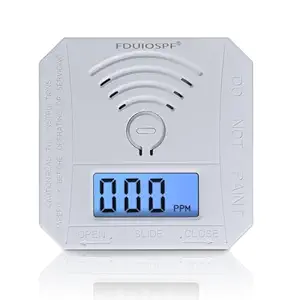Carbon Monoxide Safety: Protecting Lives Through Awareness
Carbon monoxide (CO) is a silent killer, often referred to as the “invisible poison.” Odorless, colorless, and tasteless, this toxic gas can have deadly consequences if left unchecked. This blog delves into the importance of carbon monoxide safety, offering 25 actionable tips to keep your family, workplace, and community safe.
Understanding the Dangers of Carbon Monoxide
- What is Carbon Monoxide?
Carbon monoxide is a gas produced by incomplete combustion of fuels like wood, coal, gasoline, propane, and natural gas. - Why is Carbon Monoxide Dangerous?
CO binds to hemoglobin in the blood, preventing oxygen from reaching vital organs, potentially causing brain damage or death. - Common Sources of Carbon Monoxide
Appliances like gas stoves, water heaters, fireplaces, and vehicles running in closed spaces are common culprits.
Home Safety Tips for Carbon Monoxide Prevention
- Install Carbon Monoxide Alarms
Place CO alarms on every level of your home, especially near sleeping areas. - Test Alarms Regularly
Check the batteries and functionality of your CO alarms every month to ensure they are operational. - Ensure Proper Ventilation
Avoid blocking vents and ensure adequate airflow around gas-powered appliances. - Avoid Indoor Use of Generators
Never use generators or charcoal grills indoors, even in garages or enclosed spaces. - Maintain Heating Systems
Schedule annual inspections for furnaces, water heaters, and other fuel-burning appliances. - Don’t Leave Vehicles Running Indoors
Never idle your car in a garage, even with the door open, as it can quickly fill with CO. - Be Mindful of Chimney Maintenance
Regularly clean and inspect chimneys to prevent blockages that could lead to CO buildup.
Workplace Safety and Carbon Monoxide Awareness
- Conduct Safety Training
Educate employees on CO risks and prevention measures as part of workplace safety protocols. - Use CO Detectors in Workspaces
Install detectors in areas where fuel-burning equipment is used. - Inspect Equipment Regularly
Ensure that forklifts, space heaters, and other machinery are in good condition and leak-free. - Promote Proper Ventilation in Work Areas
Keep workspaces well-ventilated, especially in areas where CO may accumulate. - Avoid Using Gas-Powered Tools Indoors
Use electric alternatives when working indoors to minimize CO exposure.
Recognizing Carbon Monoxide Poisoning Symptoms
- Learn the Early Symptoms
Be aware of headaches, dizziness, weakness, nausea, and confusion as potential CO poisoning signs. - Identify Severe Symptoms
Loss of consciousness, chest pain, or seizures may indicate high CO levels—seek medical attention immediately. - Know Who is at Risk
Pregnant women, infants, and individuals with respiratory conditions are more vulnerable to CO poisoning.
Emergency Preparedness for Carbon Monoxide Exposure
- Develop an Evacuation Plan
Have a clear plan for safely evacuating your home or workplace during a CO alarm. - Seek Fresh Air Immediately
If exposed, move outdoors and call emergency services immediately. - Don’t Re-Enter Without Clearance
Only return to the affected area once professionals confirm it is safe.
Long-Term Prevention Strategies
- Upgrade Old Appliances
Replace outdated fuel-burning appliances with energy-efficient models to reduce CO risks. - Install Smart CO Monitors
Advanced monitors send alerts to your phone, keeping you informed even when you’re away. - Collaborate with Neighbors
Share safety tips and ensure everyone in your community is aware of CO risks. - Stay Informed
Regularly update your knowledge on carbon monoxide safety to stay ahead of potential risks.
Conclusion: Carbon Monoxide Awareness Saves Lives
Carbon monoxide poisoning is entirely preventable with awareness, proper equipment, and proactive maintenance. By implementing these 25 safety tips, you can protect yourself and your loved ones from this invisible threat.
carbon monoxide poisoning symptoms, CO alarm placement, home safety measures, carbon monoxide poisoning risk, workplace CO safety, carbon monoxide prevention strategies.
Take Action Now: Install CO alarms, schedule appliance inspections, and spread awareness to build a safer environment for everyone.
“Start Your Website Journey Today – Exclusive Hostinger Discounts!”











